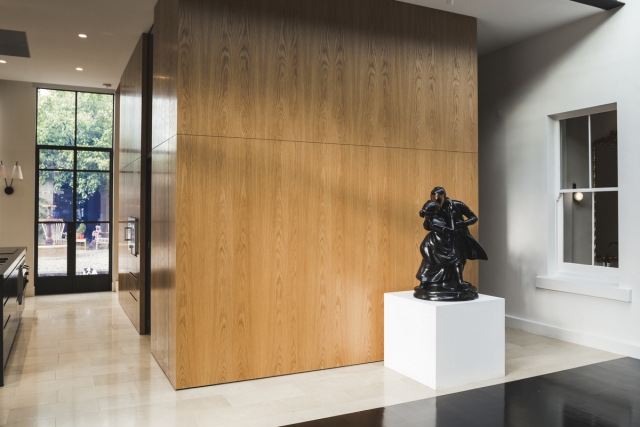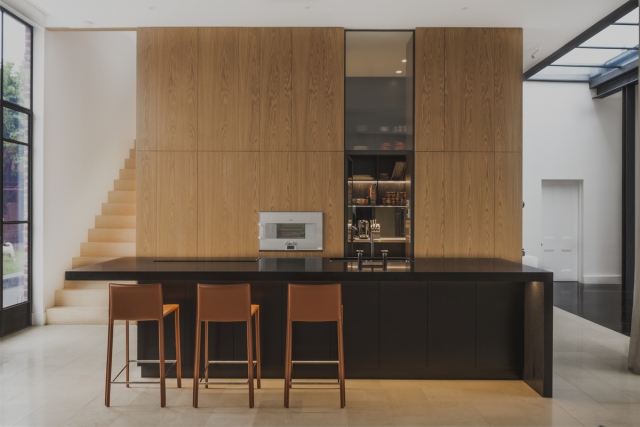This project involved the restoration and modification of an historically significant single storey Victorian era Italianate villa in inner Melbourne.
Format Architects’ brief was to combine the historic original building with a new addition to create a home for contemporary living.
The original house remains largely intact to retain historical value whilst the new additions provide an opportunity to add contemporary amenity commonly lacking in Victorian era houses; including providing new spaces which are well oriented, naturally lit and ventilated and meaningfully connected to outdoor space.
This project offered a range of opportunities to engage with tradition in different ways including the faithful restoration of traditional features, the reinterpretation of existing architectural ideas such as the iron columns of the traditional veranda and the introduction of new discordant ones like the use of Perspex to amplify the characteristics of the original house and provide a new way of seeing the old.
The building functions both as a dwelling and a display for the owner’s contemporary Australian and New Zealand art collection.
Imagining of the house as both gallery and home was considered during the design stages and influenced decisions such as window placement and the play of natural and artificial light.
Spaces are designed to accommodate a wide variety of sculpture, hanging wall art, video and light installations inserted into the everyday domestic setting of kitchen, pantry, and powder room.
Format Architects’ clients were also keen to adapt and reuse steel framed windows reclaimed from a previous project.
The extension is legible as distinct works while being sympathetic in scale to the original house. The new built form is understated when viewed from the street.
The new north facing 2 level extension has been located to the rear behind a brick garage and pool area partly over clad in black Perspex which mirrors the lush garden and the detailed Victorian façade in the distinctive large setback on approach to the front door.
New works are contemporary in appearance and reference a more industrial take on traditional Victorian era materials such as recycled brick and steel.
The existing house was carefully restored and upgraded to include new artificial lighting, heating, mechanical ventilation and increased thermal performance.
More robust interventions to the original house included demolition of some internal walls in order to better connect spaces.
Detail design components include the adaptive reuse of steel window frames and recycled bricks used in the new addition.
The transition between old and new is expressed with a glazed atrium framed in steelwork and glass.
Steelwork extends outside to form a colonnade facing the pool area and references Victorian iron detailing including clustered iron columns to the original front veranda.
This project was a collaborative process with valuable input from all disciplines.
Landscape design plays a central role in the design with most rooms enjoying direct access to the outdoors.
The landscape varies as the house progresses in formality from public to private.
The landscape reinterprets traditional details including the tessellated motifs of the front veranda tiling.
Project Details
Project size – 350 m2
Site size – 1,200 m2
Completion date – 2018
Building levels – 2
Project Team
Architecture
Format Architects
Martin Rubenstein is the Director of Format Architects.
He studied at RMIT before gaining experience at noted local and international architectural practices.
In 2011 Martin established Format Architects.
His architectural work has been published in leading architectural periodicals and he has been a design studio tutor at the Department Of Architecture, RMIT and the Faculty of Architecture at the University of Melbourne.
Photography
Ernesto Arriagada
Photo Gallery
Click on a thumbnail image to enlarge.
Design © 2020 Format Architects. All Rights Reserved. | Images © 2020 Ernesto Arriagada. All Rights Reserved.
Get the Builtworks Letter
In every edition of the Builtworks Letter, you’ll get the behind-the-scenes backstory as to how buildings are designed, built, and brought to life.
You’ll hear compelling stories, learn surprising ideas, meet engaging characters, and discover unique voices.


















